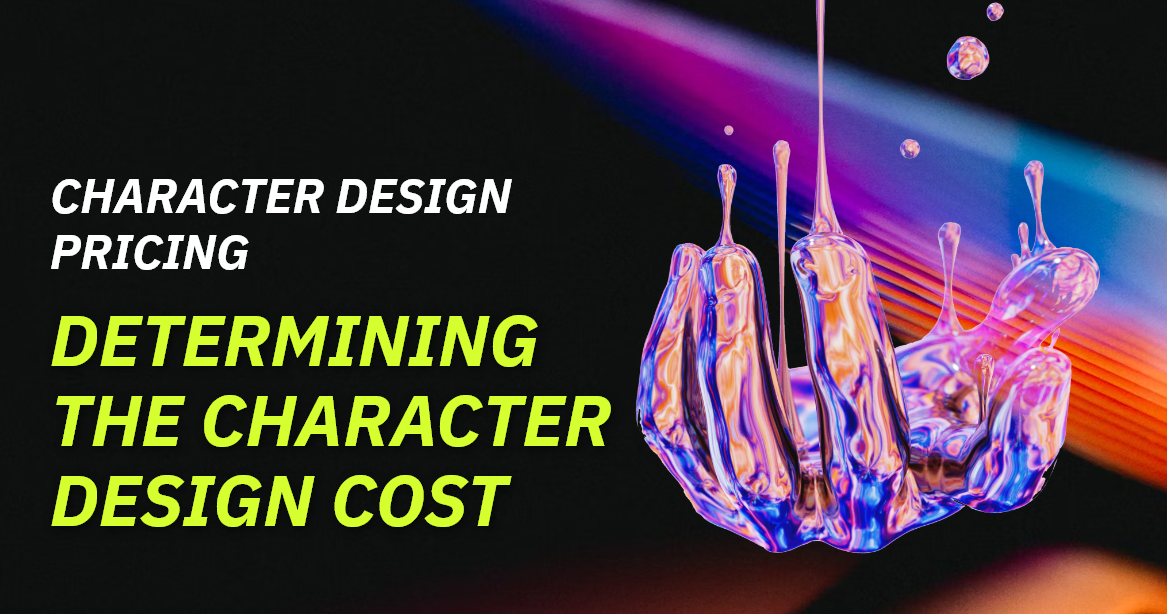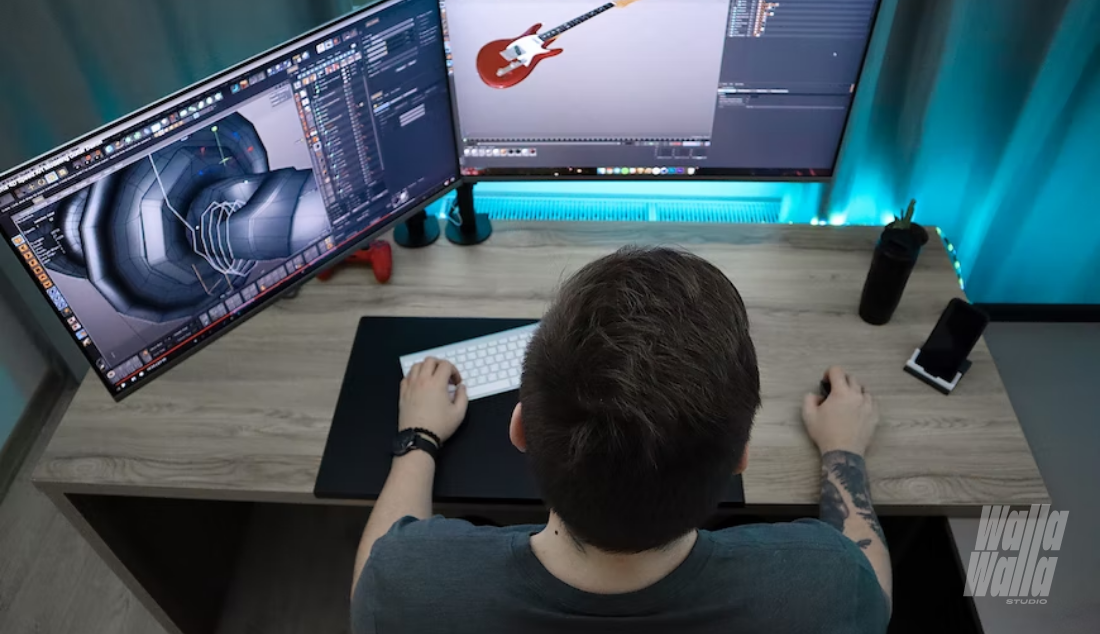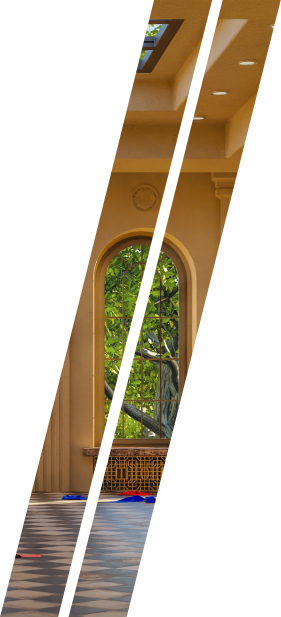 Search
Search

Nothing extraordinary seemed to happen in the world gamers’ community when Keanu Reeves embodied the main character of Cyberpunk 2077 on the screen. The game creators and players recognized the movie superstar as Johnny Silverhand. The trend of using the images of real-world actors as game characters is apparent. Why so? Do modern visual designers suffer from a crisis of imagination? What does the character design imply in general? And how much can an iconic character’s design cost?
The questions are not idle in light of the continuing growth in digital video content consumption. Both game development companies and players foresee new viral games appearing. Viewers expect new memorable characters saturating various visual productions. Few know what it takes to create a virtual character, however. Walla Walla Studio is sharing expertise in character design pricing to fill the gap.
Does character design matter?
It is widely believed that the success of a video game depends on the charisma of its main character. Many famous ones are presented as an argument: Sonic, Mario, Master Chief, Kratos, etc. Hence, the very availability of a personified central character with a particular backstory is accepted by default.
But wait! Some popular titles do without empathy-inducing characters at all. They represent game environments where players do not need to identify themselves with a unique-looking protagonist to complete the mission. To be precise, a nominal central character is available and even flexibly modifiable with various options according to the players’ preferences. But such a character is rather a costume that a player has to wear to interact with the game world. The cost of character design determines the quality of that costume.
World of Tanks, Warcraft, Counter Strike, and some other gaming heats have no recognizable central characters who induce a certain emotional response in gamers. It seems the gameplay, not the characters, matters most for those games.
At the same time, characters as such are critical for any visual content, be they highly personal like Johnny Silverhand or impersonal like tanks from WoT. Everything revolves around characters to either retain or turn away the audience. The question is: how to achieve the first and avoid the latter?
What determines the success of any character
Creating an iconic character is not rocket science, but nevertheless. Unlike the broad public, visual designers are aware of the ingredients of a truly viral character. The ingredients combine some basic principles and a sequence of steps in building character designs.
- Emotional response
Each designer must know the fundamentals of human psychology to make people get lost in the virtual world. It happens when they identify themselves with characters. A certain degree of emotional affinity is to emerge between people and virtual creatures. The stronger the emotional response, the better. This is not about sympathy only: negative emotions towards villains hardly work worse. Therefore, the strength of the emotional charge, not its polarity matters.
The first and foremost characteristic of a successful character is the ability to touch some human heartstrings. How does Johnny Silverhand do this? The answer is in the successfully chosen prototype: players subconsciously associate themselves with Neo, John Wick, and other cool guys embodied by Keanu Reeves on the screen. Using real actors as game characters is probably the shortest path to the players’ souls. At the same time, the price of character design in such a case is much higher than average.
- Backstory
Another approach implies more sophisticated creativity to design an unparalleled character from scratch. It starts with moral attributes to evolve with a particular backstory and ends up with appearance and physical traits. One of the best game villains, Lady Dimitrescu (Resident Evil Village), is murderous, impregnated with a parasite to regenerate, very tall and attractive. She is a holistic sensual image of a villain that outshines the game hero, as many players agree.
An original story explaining the moral and physical attributes of a character must lie in the background to give designers hints and clues about what to create. Any story is manifested as a text, isn’t it? Thus, a talented scriptwriter is an integral element of a design team. Scriptwriters set the tone for all further character developments. The creation of a character’s backstory rarely appears as a standalone item of expenditures for customers, however. Often, the cost of scriptwriting is distributed across other character design illustration costs.
- Visual standard
The appearance, physical traits, and authenticity of the motions of a character determine the destiny (or karma) of the related visual product. It does not mean, nonetheless, that the more sophisticated the graphics, the better the chance to succeed. Sonic the Hedgehog remains one of the most popular game characters having no lifelike believability on the screen, for example.
How the character looks and behaves depends on many aspects, among which a visual standard is probably the main. Very different expectations the audience may have regarding 2D characters and 3D ones. The same character has to have very distinct appearances being created as either 2D or 3D. Johnny Silverhand is excellent as the 3D version of Keanu Reeves, but who says he can be less attractive as a 2D Manga-style hero?
The famous chicken-and-egg dilemma seems to arise when it comes to choosing the visual standard for a character. What should go first: creating the character according to the desirable game standard or building the game upon the most appropriate image of a central character? Both approaches are possible. A lot depends on the backstory of the character and the general gameplay. And the price of character design can fluctuate respectfully.
- Budget
Many may argue that the budget should sit atop a hierarchy of the determining factors for any character. The sophisticated 3D graphics with smooth motions based on the advanced engine can never go cheap. Any imaginary vision of a character does not matter if the budget is insufficient for building the visual product as the creators would like to.
The correspondence of gameplay to a certain development technology (and, therefore, budget) is a pretty subtle issue. Cyberpunk 2077 has to be either an AAA-class 3D console RPA or not to be at all. If no 2D palliatives are acceptable for the game plot, the game budget becomes a matter of investment. In contrast, the Angry Birds puzzle game seems to go well in both 2D and 3D versions: the budget issue is not too critical there.
Thus, budget and the gameplay’s idea should be considered in the complex. After such a composite question is set up, the cost of the original character design becomes more explicit.
- Design company
We are stepping on thin ice with the danger of falling into subjectivism when identifying designers as a success factor for virtual characters. But the truth requires mentioning it to complete our review. Practice suggests that a wrong choice of a design company eliminates all factors rightfully arranged before.
This is not just about attempts to save on hourly rates, which, by the way, always leads to disappointing results. This is mainly about the scope of visual design services and relevant expertise the company should have in each case.
It is risky to order a 2D character design from a company without experience in 2D animation, isn’t it? A company can be good at 3D modeling but has no artists capable of making even the simplest hand-drawing. And vice versa: true experts in 2D animations can appear powerless in creating 3D characters.
A portfolio of the already released projects, testimonials from customers, eye-catching landing pages, and an impressive website can give a general picture of a design company, of course. But it does not mean you have found the one capable of making your character a guaranteed success. Only live communication with the team can reveal whether your search is over or it is better to continue.
Сharacter design: stages of creation
We do not insist that the following character design pipelines are universal for every visual design studio. The approaches may vary. However, we dare to claim that the stages of creation inherent in our workflows are worth practising by those who feel equally well in both 2D and 3D.
2D Character Design
Choosing a 2D standard for a character can result from two possible prerequisites:
- A general vision of the future visual product corresponds to 2D graphics stylistically and conceptually. Both a character’s backstory and a plot imply 3D to be either redundant or irrelevant.
- The creators face certain budget limitations that do not allow considering 3D graphics to be applied even if it seems preferable to design the characters that way.
Anyhow, the decision to create characters in 2D is made. The process starts from the backstory of each character. Suppose the one is either unavailable or poorly developed. In that case, scriptwriters should collaborate with the customer to finalize the character’s backstory, allowing designers to comprehend the customer’s vision of the character entirely.
2D artists get to draw paper sketches to visualize the customer’s ideas. Poses, facial expressions, and physical traits of the character arrive for the customer’s approval. The artists complete layouts to pass the baton to digital designers and animators. The further stage resembles making 2D animations: the digital version of the character should appear on the screen in motion.
When it happens, a final revision regarding some peculiar features of the character (coloring nuances, applicable VFX, appropriate sounds, etc.) puts an end to the designing process as such. All that remains is to integrate the final character design into the visual environment. It is a purely technical issue that belongs to programmers rather than designers. The integration complexity may affect the final price of character design.
3D Character Design
Unlike the 2D situation, no questionable circumstances seem to precede the decision to create a character in 3D. Such a design is sophisticated and relatively expensive compared to 2D.
The desired degree of photographic accuracy determines the labor intensity of the process when a real-world personality is a prototype of a character. The pretty overused case of Johnny Silverhand is, nonetheless, a good example of the lifelike 3D simulation of Keanu Reeves in such a context.
When the character should obtain a unique look with no real-world prototype, the design complexity and, therefore, its cost depends on the image detailing expressed in the number of polygons: the more, the better.
The future character’s moral attributes and physical traits have roots in its backstory: 3D artists should understand what creature they deal with to design an authentic, memorable character. Besides, they should know how the character should interact with the game environment to preplan some behavioral patterns at the rigging stage (rigs are moving skeletons that determine muscle tensions and other movement drivers).
Before making 3D layouts, however, flat comics-like sketches should appear to generalize the character’s image. 3D modeling goes next: static models represent sculpture-like 3D layouts. Texturing follows modeling to let the character get colors and clothes. The rigging mentioned above helps the character move. Putting light and shadow on the character’s textures makes them look natural.
Animators step into play when the finished 3D image is ready to show what to expect from the character in motion. The holistic design of the character appears after bringing together the applicable VFX and final rendering. Some additional revisions may be necessary to complete and refine the character design. When all given stages are over, the character can be integrated into the relevant visual environment, and the final cost of character design becomes clear.
Factors Affecting the Final Cost of Character Design
Simply put, the team composition and required number of working hours determine an average price for character design. These two aspects apply to both 2D and 3D equally. They go under the “the more, the higher” general principle. It means that the more engaged designers, the more needed working hours, and the higher the character design cost.
At the same time, there can be specific factors beyond such a principle. The actor’s fee, for example, is one of them. Who knows how much Keanu Reeves has received for Johnny Silverhand? We may guess he has refused to get anything, but millions of dollars are equally possible.
Another affecting factor is tech-specific: different engines entail different costs. The two most popular ones are Unity and Unreal Engine. The latter is more expensive since it takes more time to use.
Yet another factor is time. Like many other types of software, video games imply tight development schedules in many cases. Hence, the development team can rarely afford to wait for character design completion, disregarding the general timeframe. Urgency results in higher character design prices mostly.
And one of the primary cost-affecting factors is the hourly rate for one or another kind of design activity. Hardly anyone has a unified formula to standardize hourly rates: too many specific aspects must be considered. In-house designers and outsourced ones cannot cost the same. American specialists are more expensive than Indian ones. Specialized game designers seem to have hourly rates distinct from what an ordinary 3D modeling company requires, and so on.
To summarize, it is an ungrateful business to try predicting some abstract price of character design. The wisest approach implies contacting a game design studio with a more or less clear concept of the game character you need. Quite a precise price proposal may be issued pretty soon after the designers acquire the general vision of your project.
How much does a character design cost?
Couldn’t we begin our post with concrete figures? Yes, we could. But the question “how much does character design cost” would have remained non-evident without the aforementioned explaining factors. Figures are figures, they cannot reveal those diverse and complicated accomplishments that character designers undertake. Now, when the holistic picture of the character designing process is available, the given prices and rates obtain explainable meanings.
An average hourly rate for 2D character design in Eastern Europe fluctuates within $25-50/hour depending on a specific design activity. American designers can cost approximately double. 3D character design costs about $35-70/hour in Ukraine, Poland, and other popular software development locations in Eastern Europe.
As we see, the gap between 2D and 3D is not too huge but significant enough to ponder the choice. Besides, the working hours needed to complete a particular character design may vary within broad limits. From 100 to 200 hours can be spent in total to do it either in 2D or 3D. Any more precise timing is speculative without an idea of a particular character to be created.

Create original character designs with Walla Walla Studio
Why is it worth engaging Walla Walla Studio for character design? Because we are true professionals in this domain. What proves this? The present consistent discourse alone seems to be appealing enough. Anybody with mediocre awareness of professional aspects of character design can hardly deliver such comprehensive content. Kidding. But only a fraction of a joke is in every joke, right?
Offering quite a broad range of services, Walla Walla remains a narrow-specialized design studio. We create game visuals of various standards. It is crucial for us to keep expertise in both 2D and 3D graphics at parity to meet our customers’ expectations in the complete package.
Our creative team has no gaps in skills to build any virtual universe from A to Z. Animation assignments of all sorts deliver special excitement to our designers. We bet that few other design studios know more about gaming environments than Walla Walla. As just a part of the game worlds’ creation, character design can never confound our artists. Landscapes, backgrounds, VFX, and other design activities go in parallel with the character design typically.
In addition, we can offer quite special services supplementary to character design. Wrapping skins, accessories, avatars, and various versions of your character into NFTs can be one of such options, for instance.
It does not imply our insufficient expertise if other questions regarding character design cost remain untouched herein. It simply means that covering everything relevant to the subject with the present content is barely reasonable. Contact our team to clarify any character design issue left beyond this article.
FAQ
1. How much does character design cost?
The price range is too broad and indefinite to indicate any abstract one-fits-all figure. A 3D video game character and 2D animation one are too distinct regarding the scope and range of work to be done to design both. Each character design is unique to have highly individual pricing. Hence, to know how much one character design costs, it is necessary to figure out how many working hours are required. Besides, hourly rates proposed by a particular design studio can determine the final figure.
2. How much does it cost to design a 2D character?
The question remains too general, even being special as such. The only clear thing is that it will be cheaper than a 3D design created by the same studio. The uncertainty of possible answers is grounded at hourly rates by various designers. The ones from Eastern Europe can cost $25-50/hour. American designers may require twice as much. The complexity of the design works may imply from 100 to 200 working hours per standalone 2D character. For example, the 2D cartoon character design cost can start from $2500 in Ukraine, while the US animation video creators can evaluate their work for up to $10000.
3. How much does it cost to design a 3D character?
The situation with a 3D character does not differ conceptually from the one with 2D. The cost depends on the number of working hours needed and the hourly rates applied. Thus, considering hourly rates within the range of $35-70, a 3D character design can cost from $3500 to $14000. More precise pricing may appear after an approximate vision of a particular character is assessed by a particular design studio.


